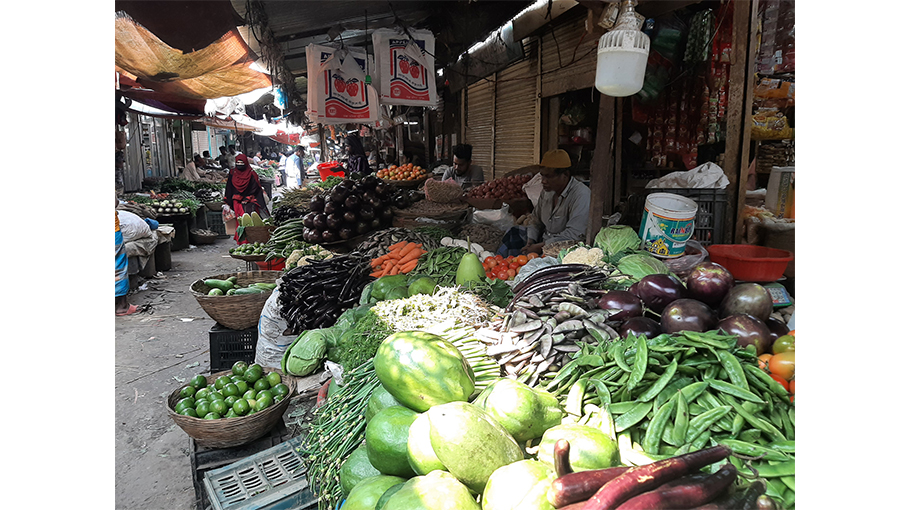Veg prices skyrocket in Kishoreganj

The lower and middle classes are in dire straits due to the unbridled rise in the prices of essential commodities in the market. Some are comparing the rise in commodity prices with wildfires. Also prices of vegetables have jumped high at different markets.
Picking up a bitter gourd at Kachari Bazar Market, Dewan Akanda asked the seller for its price. Upon hearing the reply, Ahammad's face instantly fell.
"It's 70 taka. Don't bargain. Take it or leave it," the seller said.
“It's small and can only serve two people. At most it should cost Tk 30. How can you ask for such a price?” Akanda, an employee of a private organisation asked. As the shopkeeper did not relent, Akanda left the shop after buying a half kg of brinjal at Tk 35.
Tanjina Sultana, a university student who came to a vegetable market in the kachari bazar market, said the price of most of the vegetables were above Tk 70, although the situation was different a week ago.
“I live in a university dorm. Students, especially the insolvent, are suffering a lot because of the hike. Even, some of my friends have decided not to eat vegetables,” she said.
Beans that were selling at Tk 60-80, Korola at Tk. 100-120, Potatos at Tk. 25-30, Tomatos at Tk. 40, Cavage at Tk. 40-45, Carrot at Tk. 45-50, Cauliflower at Tk. 35-40, Green chili at Tk. 60-65, Papaya at Tk. 50-55, Longbean at Tk. 100, Turnip at Tk. 40-45, Sajne Data at Tk. 200, Brokly at Tk. 60, Edible root loti at Tk. 65, according to market monitoring.
Prices of vegetable items such as brinjal, cauliflowers, cabbages, bottle gourd, tomato and potatoes marked a rise and so did onions. Vegetable prices doubled in a week at Boro Bazar Market, a major wholesale market.
Some are also blaming the rise in commodity prices on the lack of good governance in the domestic market.
CAB is working on consumer rights. According to the organization, all the achievements of the government will be tarnished if the government cannot control the rise in commodity prices.



